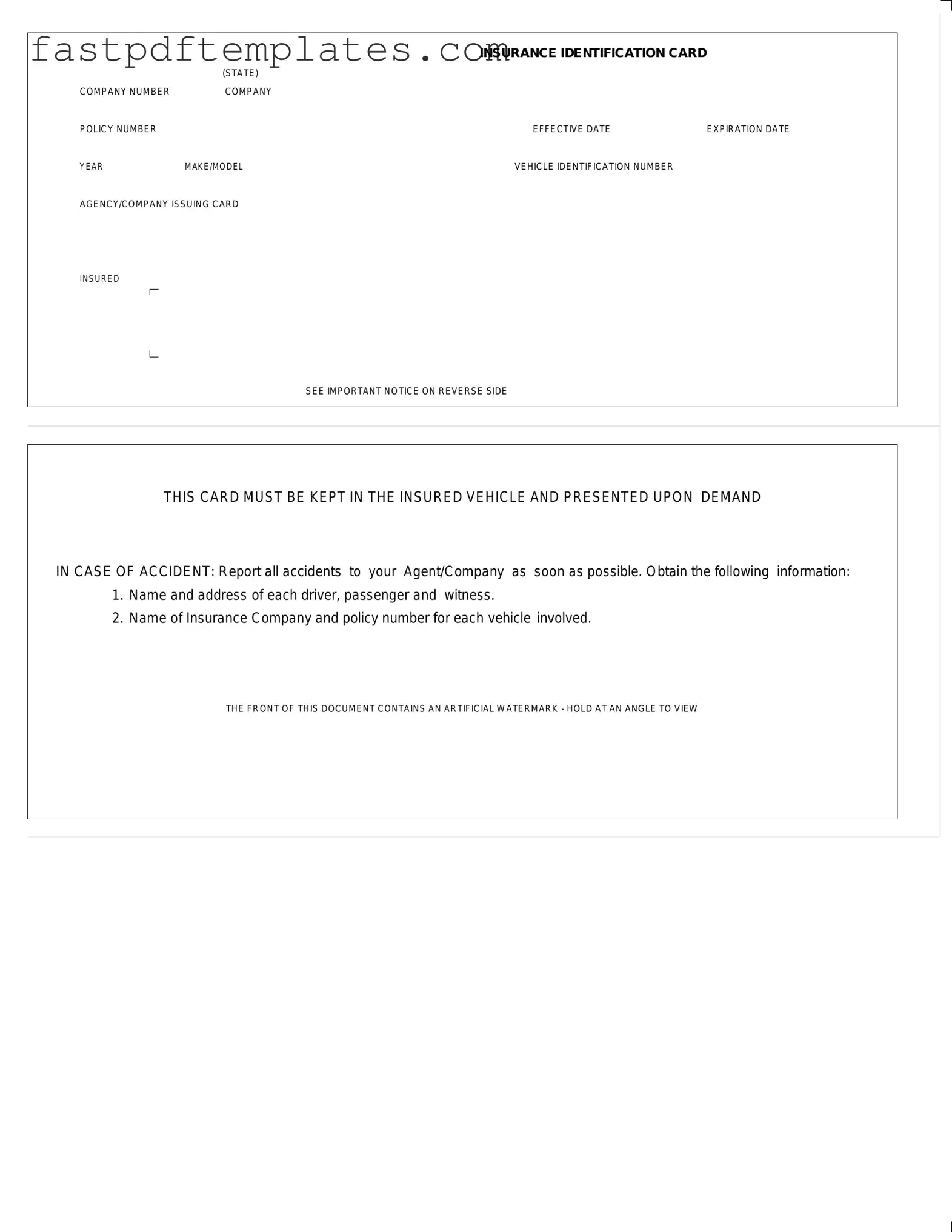The Vehicle Registration Certificate serves as proof that a vehicle is registered with the state. Similar to the Auto Insurance Card, it contains essential information about the vehicle, including the owner's name, the vehicle identification number (VIN), and the registration expiration date. Both documents must be kept in the vehicle and presented when required, such as during traffic stops or accidents. The registration certificate ensures that the vehicle is legally recognized for use on public roads.
The Driver's License is another crucial document that shares similarities with the Auto Insurance Card. It provides identification for the driver, including their name, address, and date of birth. Like the insurance card, it must be presented upon request by law enforcement. Both documents are integral to operating a vehicle legally and safely, as they confirm the driver's identity and their right to drive.
The Proof of Insurance document is directly related to the Auto Insurance Card. It serves as evidence that a driver has the necessary insurance coverage required by law. This document typically includes the same information found on the insurance card, such as the policy number and effective dates. In many situations, such as when involved in an accident, the proof of insurance must be shown to validate coverage.
The Title of the vehicle is another important document, similar in purpose to the Auto Insurance Card. The title establishes ownership and includes details such as the owner's name and the VIN. While the insurance card proves that the vehicle is insured, the title confirms who legally owns it. Both documents are essential when selling or transferring ownership of a vehicle.
The Bill of Sale is related to the transfer of vehicle ownership and is similar to the Auto Insurance Card in that it documents a transaction. This document includes the buyer's and seller's names, the vehicle's details, and the sale price. While the insurance card is necessary for driving, the bill of sale is crucial during the purchase process, ensuring that ownership is formally recorded.
The Inspection Certificate, often required by state law, is akin to the Auto Insurance Card in that it certifies a vehicle's roadworthiness. This document indicates that a vehicle has passed a safety inspection and meets state standards. Both documents must be presented if requested by law enforcement and are essential for ensuring that a vehicle is safe for use on public roads.
The Emissions Certificate is similar to the Auto Insurance Card in that it verifies compliance with environmental regulations. This document shows that a vehicle meets emissions standards and is crucial in states that require emissions testing. Like the insurance card, it must be available for inspection to confirm that the vehicle adheres to state laws.
Finally, the Rental Agreement can be compared to the Auto Insurance Card, particularly when renting a vehicle. This document outlines the terms of the rental, including insurance coverage options. Both documents must be presented when driving a vehicle, ensuring that the driver is authorized to operate the car and has the necessary insurance coverage, whether for personal or rental use.

